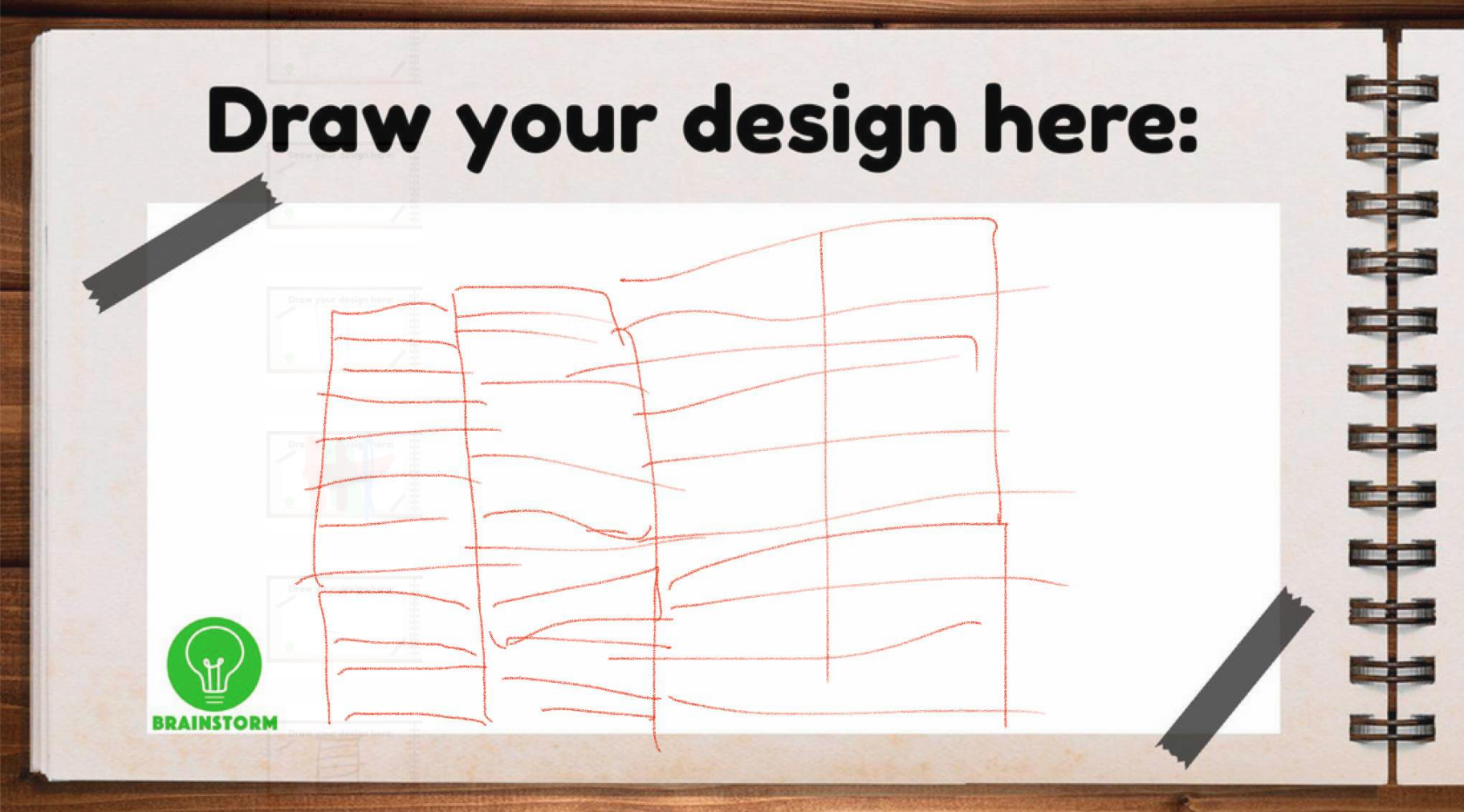Ideate or not?
Adults often rush decision making, so it's to no surprise my students would prefer to jump straight to building and skip the ideation process. They are so eager to get their hands on materials and begin creating. After school one day, I stared at the indecipherable kindergarten sketches, I began to consider if I should cut down on the brainstorming or skip this stage altogether. I justified that it would provide more time to create, test, and reflect.
However, I stuck with it and found with modeling and encouragement their sketches became more detailed, well-thought out, and they began adding labels. I was seeing value in the process. And as the weeks passed by, I noticed some students wanted to spend more time carefully planning than they did on creating.
With the limitations, because of Covid, I run all my lessons through Nearpod. It eliminates the need for paper, pencils, etc. When students are ideating, their designs show on the big screen at the front of the room. I began adding some time for students to share their ideas before we start creating. We talk about how we are a team and one idea might spark a new idea.
The icing on the cake was the day a 1st grader was building a tower to help the giant back up the beanstalk to his castle. You can see her sketch below.

Shortly after she started building, I heard her say “Hmm… what was I planning to build next?” and she consulted her Nearpod sketch. She examined the very simple sketch as if it were a detailed blueprint. After studying it carefully she then returned to building. It was the moment I needed to seal the deal… planning and sketching was a critical part in the design thinking process even at the primary level.
As an adult, I understand the value of planning, even though I often want to rush or skip this step. But I see now the persistence of helping them improve their sketches and slow down during the planning stage produces positive life skills and better products.